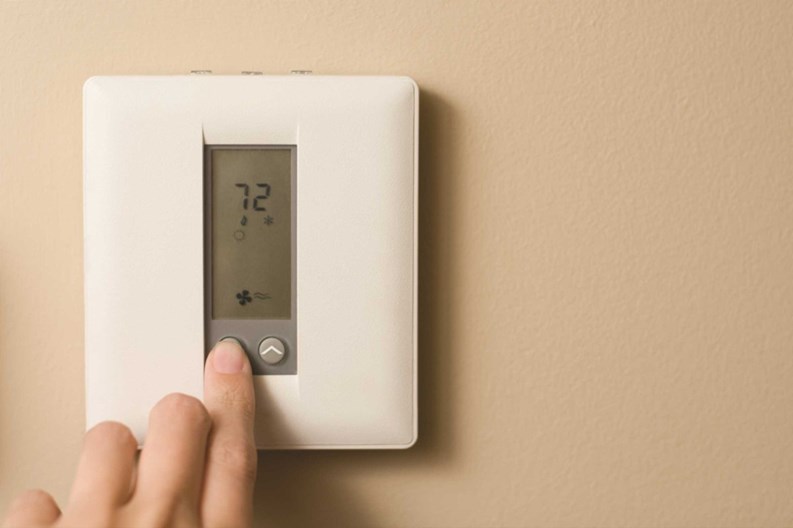Green is the new buzzword in our society but not everyone is as energy-conscious as they should be. Although many residents leap at the chance to save money and conserve energy, apathy and resistance to change are major obstacles for many.
The reality is that in a condo setting, building administrators aren't in a position to force changes in individual units. So while state and local governments implement energy-saving incentive programs and more buildings and HOAs are being built or retrofitted with next-generation energy-saving devices and technology, the day-to-day habits of individual unit owners can have a significant impact on the bottom line when it comes to energy costs. And that’s not always a good thing.
Awareness of Value
To reach residents, experts agree you must reach ‘their’ bottom line. Money is a motivator, and association boards can generate interest by making sure unit owners know that their board is looking for ways to reduce everyone's energy costs and making their property more valuable.
In buildings with rental tenants, creating awareness may be a little more difficult. “When it comes to their apartments, renters have a transitory outlook,” says Jerry Pindus of U.S. Energy Group in Fresh Meadows, New York. “The message we try to share is that it’s the planet that matters and that is important regardless of which apartment you live in. We try to appeal to the notion of shared responsibility; but ultimately, since they aren’t directly saving money, it is more difficult to motivate action. However, a lot of people care about the environment, and if you tell them how they can help, they will.”
Whether or not residents make changes also depends on whether or not the building is master-metered, which means the residents energy costs are included as part of their monthly charge. Without seeing the direct impact on their pocketbook, the pros say there isn’t a great incentive for most residents to change.
According to Allan Samuels, a partner with Energy Squared, LLC, a full service engineering design consulting firm in North Brunswick, cost savings are very possible with a few simple lifestyle changes. Energy and maintenance costs can be seen as large, fixed amounts in an association’s budget. In reality, the fees associated with utility and maintenance can be reduced dramatically with a few basic changes in a community association’s reserve components. By looking at the big picture, recommendations can be made that can save associations hundreds of thousands of dollars.
“The problem is that if you do not have an electrical meter for every single resident, there can be what I like to call it the 'hotel mentality,' because when you stay in a hotel room—even someone like me who's very involved in engineering and energy—will often leave the room with the lights on, the TV on, go downstairs; do whatever they want to do, because they're not paying directly for it. There's a lot of literature and some extensive studies showing that there's about a 20 percent savings if you can submeter individual owners.”
“The best way for the board to educate their residents is to discuss the cost of energy and make people very aware of what it's costing them,” Samuels continues. “When you discuss the ability to save money, people become very interested and highly motivated. If you do an energy audit, you can generally find out how much money you are going to save in that building, and that can translate to dollars in everybody's pocket. I think that is the biggest motivator,” Samuels says.
Stuart Hickox, founder of One Change, a non-profit organization based in Ottawa, Canada, that is working to raise awareness of simple actions that can substantially reduce energy use, explains that “if you can make simple actions more accessible, you get people's attention.
“There are so many things that people can do in their homes to cut their energy bill—so why aren't they doing them? It's because they don't believe that it can make a difference individually. Building managers can create a sense of momentum by identifying the people in the building who care the most and can bring those groups together to try to do the simple things. People aren't going to do any of that kind of stuff unless they feel that they're part of something bigger,” Hickox says.
Education and Communication
An educational campaign can include informational flyers posted in common areas, or an e-newsletter with tips and suggestions on going green. One useful strategy might be to compare energy costs to something else concrete in residents' lives, such as the cost of a Starbucks coffee, or their monthly cable bill.
But flyers and fact-sheets only go so far, says Hickox. “There's a big difference between telling people what they should do and giving them the chance to experience it. We often have building managers calling us saying; 'I keep sending out flyers or slipping things under doors or calling community organization meetings to talk about it and the same people show up, and nothing ever happens.' My first recommendation to building managers is that if you want to get residents engaged, make that first step easy. Enable the advocates in your HOA to handout a free compact fluorescent bulb or other simple measure that people can take. That moment provides the opportunity for a real engagement. It's not just junk mail or a bulletin that's posted up in the lobby or something like that or through a newsletter.”
“If management aren't communicating with their residents on a regular basis, they need to rethink the whole thing and get involved,” says Joe Jankoski, vice president of corporate merchandising for Hunter Douglas, a manufacturer of custom-made window treatments in Upper Saddle River. “The most effective way is periodic emails, and communications that are relevant to the people living there in a very efficient way. Consider using testimonials—if someone has a good result with a particular measure, feature that person and their story. The whole social networking opportunity really does play well into this communication thing. You can have a Facebook page and have everybody use that. The only caveat is that you need to deliver content that's worthy. People want to see things that are relevant, local, and there's certainly enough material for a building owner, manager, condo association to take advantage of.”
“It's definitely an education process,” agrees Samuels. “The first step is to actually understand what portion of energy is being used in their specific living space and where that energy is being used. In other words, how much of the energy is being used for air conditioning, for heating; how much is being used for lighting, and so forth. I think you need to understand where it's going before you can start to chop it, and most people don't.”
To investigate ways to save energy in the building and disseminate that information to the residents, a subcommittee can be formed. “We see that all the time now,” says Samuels. “Many buildings have formed green committees to start to initiate these measures. We often meet with these committees, and the board will enforce what they decide. It's really an essential part of turning your building green and saving energy.”
“I have heard some co-op boards have created subcommittees to investigate ways to save energy in the building,” adds Pindus. “We’ve been approached by some who were seeking solutions and want to know about the EMS [an integrated energy management control system.]” An EMS or energy management system organizes the energy efficiency information and procedures collected on a building or association and spreads awareness of this to the community.
“Some of the tips were obvious to building owners, but not to residents,” says Pindus. “For example, they don’t realize that opening windows in an overheated apartment in the middle of winter is very wasteful. Some other ones we recommended included using cold water when doing laundry; reporting leaks to the super immediately, and so forth.”
Resources and Incentives
Doing more to save energy doesn't have to involve laborious homework. “Just Google ‘energy savings,’ ” says Jankoski. “There are websites that give you energy savings calculators that allow you to actually plug in a particular scenario and then find out what the actual potential savings are in dollars and cents.”
According to Samuels, there are an array of excellent resources available to boards and managers looking to save their properties money on energy. “I believe you get what you pay for,” he says, “but there's a lot of help and an amazing amount of free money available as well. There are rebates and low interest loans and all kinds of funds out there, especially in New Jersey. For example, when anyone in the state of New Jersey pays a major utility bill, there's a line item on there called ‘societal benefits.’ We've all been paying it for years, and very few people ask where that money's going to. It actually goes into a fund that supports these energy saving measures. But, there are also federal funds and stimulus money that are available too. It is a very rich environment for financing right now for this type of project.”
Hickox advises that a natural starting point would be the New Jersey Clean Energy Program website (www.newjerseycleanenergy.com) to learn about all the incentives and programs. This is a great community outreach initiative, he says, and there are a lot of other complementary programs and messages on the website for everyone to explore. For example, states Hickox, there's a great rebate program in New Jersey where if you have a second refrigerator or an old refrigerator, they'll come and pick it up and safely recycle it. There's a rebate, and you can save up to $140 a year on energy just for getting rid of an old guzzler refrigerator.
With regular communication, updates and praise, hopefully residents will start to make changes in their own units, which can lead to happy endings that result in not only cost savings for residents and their building, but a healthier environment for all.
Lisa Iannucci is a freelance writer and author living in Poughkeepsie, New York.







Leave a Comment